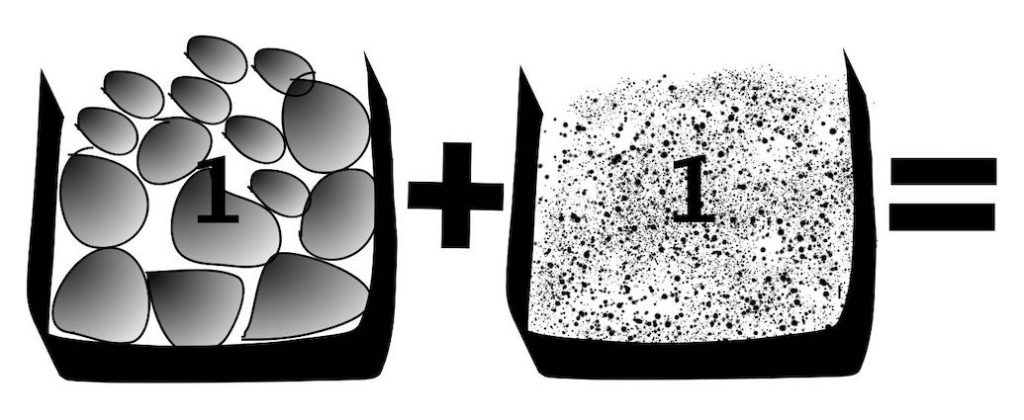
What is 1+1 ? Isn’t that the simplest no-brainer Math?
Not exactly… Actually, the answer to this is (as with most of life’s questions of consequence) – ‘it depends’!
1+1 is 2, only in certain ‘contexts’. There are many other ‘contexts’ (alternate worlds?), where 1+1 is not 2. It all depends on what the two 1’s represent and what ‘adding’ really means. Let us examine this…
The most original treatise on this that I have come across, is in the famous Malayalam novel ‘Balyakala Sakhi’ (‘childhood sweetheart’) by Basheer (Basheer – 1944).
In the story, when the teacher asks the protagonist first-grader the answer for ‘1+1’, the boy thinks thus : “when two rivers merge, what would you get”? “A ‘slightly bigger’ river. So naturally, 1+1 is ’a slightly bigger 1′.
The author probably meant it (and is also often quoted) as a classic example of how ‘dumb’ souls misunderstand scholarly concepts. But with due respect to the veteran writer, I would say the boy’s thinking was brilliant! That is precisely what 1+1 is, but in that particular ‘context’.
Now, consider two Vectors in Vector Algebra. When you add them, you get another Vector, typically longer – yes, a ‘bigger’ Vector! Does this not look like ’a slightly bigger 1’?
What are some other such ‘contexts’?
Let us talk about the world of Probability. The ‘Probability value’ of an event is a number between 0 and 1 and it represents the chance that the event occurs. A value of ‘1’ means that the event is ‘certain‘ to occur (and a value 0 means it is certain not to occur). ‘Adding’ the probability values of two events would give you the ‘chance’ that ‘at least one of the two’ events occurs. So now, what does ‘1+1’ mean in this context? It would represent the chance that ‘at least one of two certain events occurs’ – which is also obviously ‘certain’.
Thus 1 + 1 = 1
Let us make it a bit more earthly. Take 1 kilogram of pebbles in a cup and 1 kilogram of beach sand in another (picture). What would you get if you mix (add) them? Well, 2 kilograms.. So finally we have 2 for a 1+1 (I see you are relieved!).

But wait – let us make it 1 cup of pebbles and 1 cup of sand. Now if you add them – what do we have? Well, definitely not 2 cups of the mixture! Depending on the size of the pebbles, you can have as little as just 1 cup. So again, it depends!
Finally – suppose there is one chicken sitting in a room. Now imagine one fox being ‘added’ to the room. What would be the most likely result of this ‘1+1’?
(Pardon the Schrodinger-ish grim scenario!)
Can you think of some other ‘contexts’ where there are other interesting answers to 1 + 1 ?
Bibliography
Basheer, Vaikom Muhammad. Balyakalasakhi., DC Books, Kottayam, India, 1944, https://dcbookstore.com/books/balyakalasakhi
Sankar is the founder and CEO of Silver Pi.
He had worked in Banking and Technology for about three decades before switching to Education. He is an Electrical Engineer by training, with a career in Technology and Banking across Japan, USA, Singapore and India.


6 comments